Formed September 9, 2016 | Dissipated September 17, 2016 | |
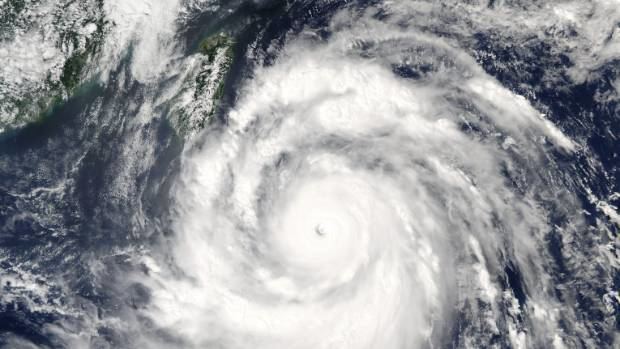 | ||
Highest winds 10-minute sustained: 220 km/h (140 mph)1-minute sustained: 305 km/h (190 mph) Lowest pressure 890 hPa (mbar); 26.28 inHg Fatalities 30 confirmed, 15 missing Damage $2.63 billion (2016 USD) Date 9 September 2016 – 17 September 2016 Similar Typhoon Megi, Typhoon Nepartak, Typhoon Malakas, Typhoon Haima, Tropical Storm Nida | ||
world s strongest storm of 2016 typhoon meranti hits taiwan
Typhoon Meranti, known in the Philippines as Typhoon Ferdie, was one of the most intense tropical cyclones on record, impacting the Batanes in the Philippines, Taiwan, as well as Fujian, China in September 2016. The fourteenth named storm of the annual typhoon season, Meranti was the strongest typhoon since Typhoon Megi in 2010 in terms of pressure, the strongest since Typhoon Haiyan of 2013 in terms of maximum sustained winds, as well as the strongest tropical cyclone worldwide in 2016.
Contents
- world s strongest storm of 2016 typhoon meranti hits taiwan
- Meteorological history
- Philippines
- Taiwan
- Mainland China
- Retirement
- References
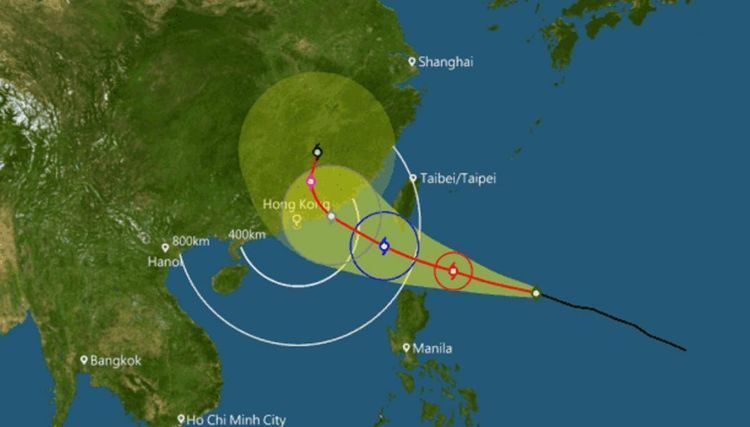
Meteorological history
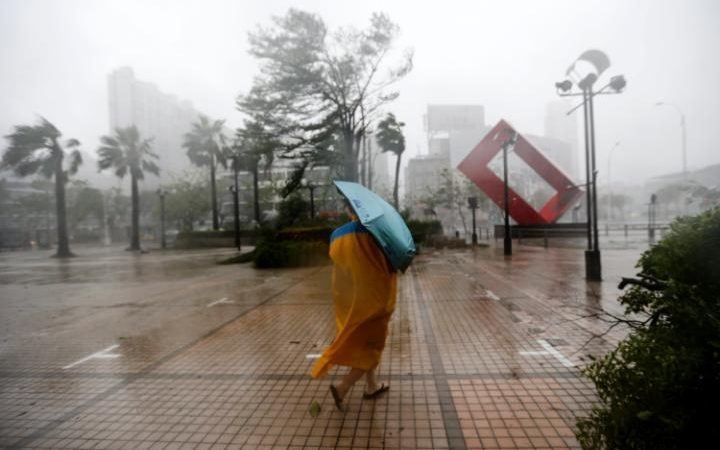
On September 8, the Joint Typhoon Warning Center (JTWC) issued a Tropical Cyclone Formation Alert for an area of convection about 155 km (96 mi) west of Guam in the western Pacific Ocean. According to the agency, the circulation was rapidly consolidating alongside fragmented rainbands. At 18:00 UTC that night, the Japan Meteorological Agency (JMA) classified the system as a depression. The next day, the JTWC classified it as Tropical Depression 16W. By that time, the nascent system was moving slowly west-northwestward through a region of low wind shear, steered by ridges to the north and southwest. Increasing but fragmented convection, or thunderstorms, was fueled by unusually warm water temperatures and outflow from the south. At 06:00 UTC on September 10, the JMA upgraded the depression to Tropical Storm Meranti, which meandered over its own track while consolidating.
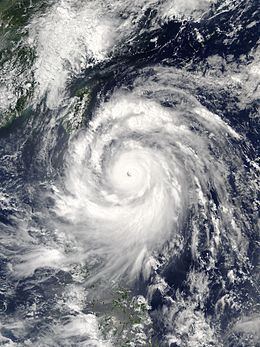
Northerly wind shear shifted the deepest convection to the south of Meranti's circulation, although rainbands and a central dense overcast continued to evolve as the wind shear decreased. By early on September 11, the storm's movement was steady to the west-northwest, south of the ridge. At 06:00 UTC that day, the JMA upgraded Meranti to typhoon status, and shortly thereafter the JTWC followed suit. The storm's structure continued to improve, with increased outflow. A small eye 9 km (5.6 mi) across developed within the spiraling thunderstorms, signaling that Meranti was rapidly intensifying. At 06:00 UTC on September 12, the JTWC upgraded Meranti to a super typhoon, with 1-minute maximum sustained winds of 240 km/h (150 mph).
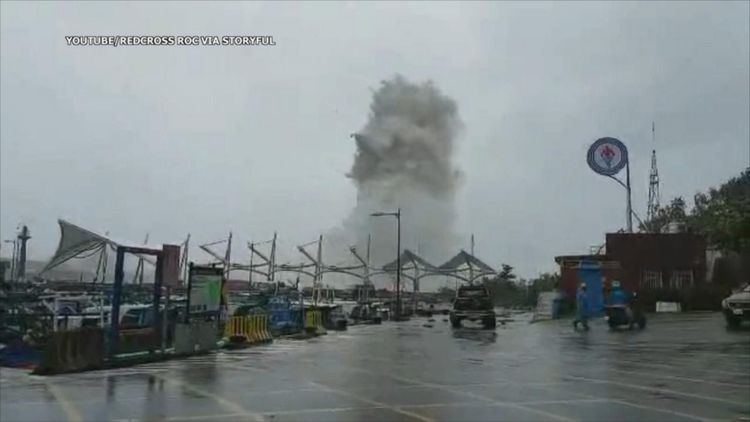
Six hours later, the JTWC estimated 1-minute sustained winds of 285 km/h (180 mph), equivalent to Category 5 on the Saffir–Simpson scale, while noting "an extremely favorable environment", and that the eye became even more symmetric within intense convection. Outflow enhanced by a strong anticyclone over Meranti fueled the intensification, and the typhoon peaked in intensity on September 13 while passing through the Luzon Strait.
The JMA estimated peak 10-minute sustained winds of 220 km/h (140 mph) and a minimum barometric pressure of 890 hPa (mbar; 26.28 inHg), while the JTWC estimated peak 1-minute sustained winds of 305 km/h (190 mph). Based on the JMA pressure estimate, Meranti was among the most intense tropical cyclones. The JTWC wind estimate made Meranti the strongest tropical cyclone worldwide in 2016, surpassing Cyclone Winston, which had winds of 285 km/h (180 mph) when it struck Fiji in February.
Late on September 13, the storm made landfall on the 83 km2 (32 sq mi) island of Itbayat in the Philippine province of Batanes while near its peak intensity. At around 03:05 CST on September 15 (19:05 UTC on September 14), Meranti made landfall over Xiang'an District, Xiamen in Fujian, China with measured 2-minute sustained winds of 173 km/h (108 mph), making it the strongest typhoon to ever make landfall in China's Fujian Province.
Philippines
Meranti struck the northernmost Philippine province of Batanes at peak strength, passing directly over the island of Itbayat; the island was left isolated after communications were lost during the storm on September 14. From text messages received by family members, residents in Itbayat reported their stone homes to be swaying during the height of the typhoon. Assessments as of September 17 indicated that 292 homes were destroyed and 932 were damaged across the Batanes. More than 10,000 people were affected by the storm, with many in dire need of water. A state of calamity was declared for the province on September 15. Total damage exceeded an approximate total of ₱244.8 million (US$5.13 million) as of September 21.
Government relief efforts reached Itbayat on September 18, reporting no casualties on the island. Vice-President Leni Robredo visited the island bringing aid and relief while being briefed of the situation.
Taiwan
At least two people were killed in Taiwan. Nearly 1 million households lost power and 720,000 lost water supplies. Agricultural damage exceeded NT$850 million (US$27 million). A small lighthouse in Taitung County collapsed and rough seas unmoored 10 vessels in Kaohsiung Harbor.
Mainland China
Typhoon Meranti wrought extensive damage across Fujian and Zhejiang provinces. In Fujian, the storm killed 18 people and left 11 others missing. Typhoon-force winds and flash floods caused tremendous damage, leaving more than ¥16.9 billion (US$2.6 billion) in economic losses. The cities of Xiamen, Quanzhou and Zhangzhou were left paralyzed in Meranti's wake. Flash floods in Yongchun County destroyed an 871-year-old bridge that was classified as a protected heritage site. Flooding in Zhejiang claimed at least ten lives and left four others missing. At least 902 homes collapsed and 1.5 million people in the province were affected.
Retirement
During the 49th annual session from the ESCAP/WMO Typhoon Committee during February 2017, the name Meranti was retired from the rotating lists of names.
